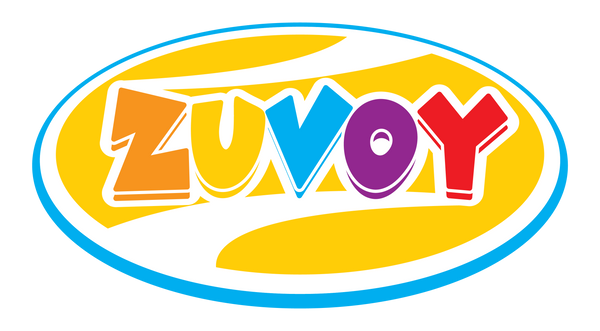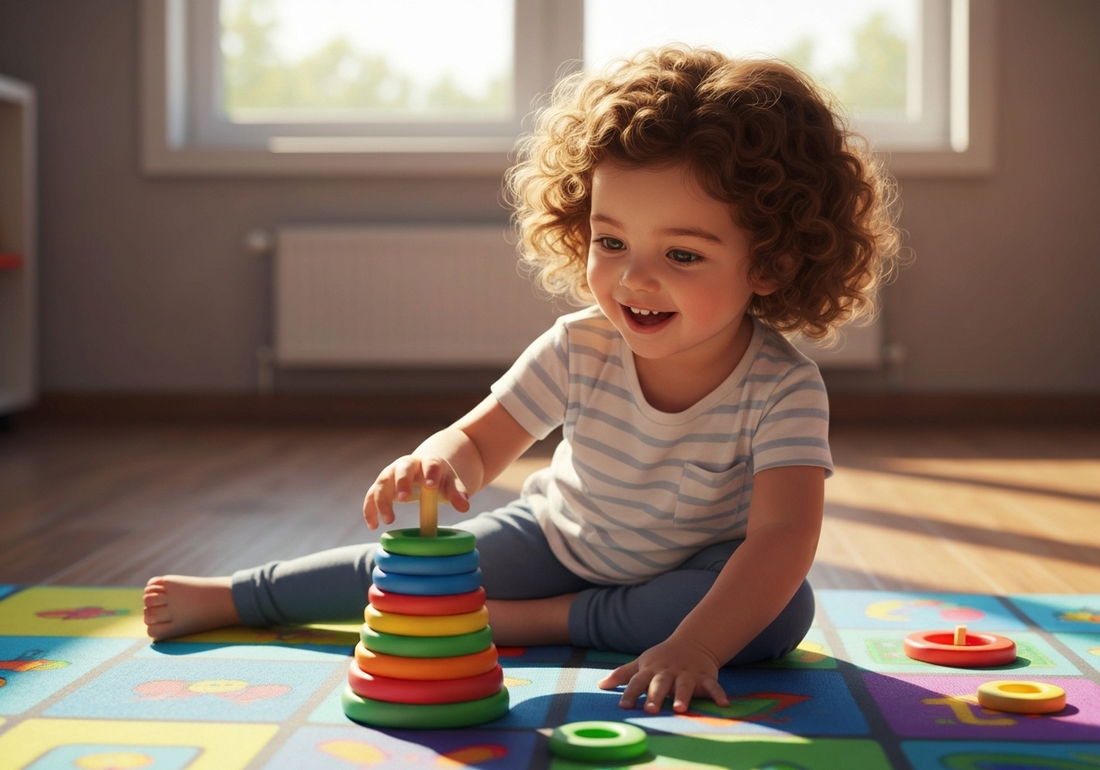Key Highlights
- A maths ring stacker serves as a powerful educational toy for a child's early mathematical development. This tool helps children learn number names and grasp the concept of natural numbers through hands-on play. To further support learning, many educators and parents have created video tutorials demonstrating how to use ring stackers to teach numbers, making it easy to follow along with interactive activities.
- This tool helps children learn number names and grasp the concept of natural numbers through hands-on play. Engaging with a ring stacker significantly improves fine motor skill development alongside numeracy. For those looking for guided instruction, there are several video tutorials available online that demonstrate how to use ring stackers to teach numbers, making it easier for parents and educators to maximize learning benefits. These tutorials provide step-by-step demonstrations, offering practical strategies for introducing number concepts in a fun and interactive way.
- Engaging with a ring stacker significantly improves fine motor skill development alongside numeracy.
- It provides a simple, visual way to introduce concepts like counting and identifying odd counting numbers.
- The tactile nature of the toy makes abstract math concepts concrete and easier to understand.
- Using a ring stacker builds a strong foundation for future learning and skill enhancement.
Introduction
Are you looking for a toy that is both fun and educational? A maths ring stacker is an excellent choice for your child's early learning journey. This simple yet effective educational toy transforms the process of learning numbers into an engaging activity. Instead of just memorizing, your child can see and feel the quantities each number represents. This hands-on approach is fundamental for their mathematical development, turning playtime into a valuable opportunity for skill enhancement and laying a strong foundation for future academic success.
How Maths Ring Stackers Support Early Numeracy Skills

Maths ring stackers are a fantastic tool for introducing the world of numbers. They physically represent counting, which is the process of determining the number of objects in a set. This visual and tactile connection helps solidify a child's understanding of quantity and number sense, which is a crucial part of early mathematical development.
Furthermore, the act of placing rings on pegs is excellent for motor skill development. This makes the toy beneficial for all children in early education, including those with special needs who may require more hands-on learning aids. The following sections explore how these toys teach counting and their suitability for different age groups.
Teaching Counting and Number Recognition Through Play
Playing with a ring stacker makes the abstract concept of counting concrete. As your child places one, two, or three rings on a peg, they are performing the basic action of counting objects. This directly relates numbers to a physical quantity, helping them understand that the number "three" means a specific amount of items. This process is far more effective than rote memorization alone.
This hands-on method is also perfect for learning number names. You can say the numbers aloud as your child stacks the rings, reinforcing the sound and order of numbers. Repeated counting in this playful manner helps children, including those with a learning disability, to better grasp numerical sequence and value. It creates a direct link between the spoken word, the written numeral, and the physical quantity.
The design of these toys, often made from high quality plywood, adds a sensory element to learning. The feel of the wooden rings and the action of stacking them enhances motor skill development and keeps your child engaged. This visual and tactile experience acts as a vital bridge between numbers and their symbolic representation, accelerating math skill acquisition.
Age Appropriateness and Learning Stages for Ring Stackers
One of the greatest advantages of a maths ring stacker is its versatility across different learning stages. For a toddler, the primary focus might be on developing motor skills by simply placing the rings on the pegs. As they grow, the toy evolves with them, becoming a tool for more complex mathematical exploration.
This adaptability makes it an enduring educational resource. It can be used to introduce natural numbers to a two-year-old or to explain concepts to a five-year-old. The toy is also a valuable asset for children with special needs, such as autism, as it provides a structured, predictable, and sensory-friendly way to learn. The table below outlines how the toy can be used at various stages.
|
Age Group |
Learning Focus & Activities |
|---|---|
|
Toddlers (1-2 years) |
Focus on motor skills, color recognition, and basic counting from 1 to 3. |
|
Preschoolers (3-4 years) |
Introduce counting natural numbers up to 10, number recognition, and simple sorting. |
|
Pre-K (4-5 years) |
Begin exploring concepts like more/less, simple addition, and identifying patterns. |
Key Features and Variations of Maths Ring Stackers

When choosing a maths ring stacker, you will notice variations in materials and design. Many high-quality options feature a sturdy wooden base and rings made from materials like high quality plywood, offering a durable and classic feel. Others are made from lightweight, colorful plastic, which can be very appealing to young children.
The number of rings and pegs can also differ. Most standard sets are designed to teach numbers one through ten. Some versions may include extra rings to allow for more complex counting and math games. Understanding these differences in material, color, and quantity can help you select the best educational tool for your child's specific learning needs.
Materials, Color Choices, and Their Impact on Learning
The material of a ring stacker can influence your child's learning experience. A classic wooden stacker, often built with a solid wooden base and high quality plywood rings, provides a satisfying weight and texture. This tactile feedback can enhance focus and provide a rich sensory experience. Plastic stackers, on the other hand, are typically lighter and available in brighter color choices, which can be highly engaging for visual learners.
Color is more than just decoration; it’s a tool for skill enhancement. You can use the different colored rings to introduce sorting, patterning, and classification. These activities build foundational logical thinking skills that are essential for mathematics. Here are a few ways to use color:
- Ask your child to sort all the rings of one color onto a single peg.
- Create a simple pattern (e.g., red, blue, red, blue) for your child to copy.
- Use different colors to represent even counting numbers and odd numbers.
Ultimately, whether you choose wood or plastic, the vibrant colors play a key role in making learning fun. They help differentiate numbers and quantities, making abstract concepts easier to visualize and remember. This visual reinforcement is a powerful component of the learning process.
Typical Number of Rings and Fun Math Activities to Try
Most maths ring stackers come with a set number of rings designed to teach counting from 1 to 10. For example, the peg labeled "1" will have one ring, "2" will have two, and so on. This design provides a clear, visual representation of increasing quantity. Some sets include extra rings, which offer more flexibility for a variety of fun math activities.
Ready to move beyond simple counting? The physical nature of the rings makes them perfect for introducing basic arithmetic and number theory in an intuitive way. Instead of just listening, your child can actively participate in solving math problems. Try these simple activities:
- Learning Number Names: As your child stacks rings on the "4" peg, count them aloud: "one, two, three, four."
- Exploring Odd Numbers: Ask your child to only stack the odd numbers: 1, 3, 5, 7, and 9.
- Simple Addition: Place two rings on a peg and three on another. Ask your child to move them all to one peg and count the total.
These hands-on games help your child build a deeper, more intuitive understanding of math. They learn that numbers are not just symbols on a page but represent real quantities they can touch and manipulate.
Conclusion
In conclusion, using a Maths ring stacker can significantly enhance early numeracy skills in young children. These engaging toys not only promote counting and number recognition through playful interaction but also cater to various age groups and learning stages. The materials and color choices involved in ring stackers further enrich the learning experience, making it both enjoyable and educational. By incorporating fun math activities into playtime, parents and educators can create a lively learning environment that fosters a love for numbers from an early age. If you’re ready to elevate your child's learning, explore our selection of educational ring stackers today!
Frequently Asked Questions
What are the benefits of using a numerical ring stacker in early education?
A numerical ring stacker is an educational toy that aids mathematical development by making counting tangible. It enhances motor skill development and reinforces number recognition through hands-on play, providing crucial skill enhancement during early education and making abstract concepts understandable.
Are there any differences between wooden and plastic maths ring stackers?
Yes, wooden stackers, often made from high quality plywood with a wooden base, are durable and offer a tactile experience. Plastic versions are lightweight and typically come in brighter colors. Both are effective for skill enhancement and can support children with a learning disability.
Where can I buy educational ring stackers for teaching numbers in India?
You can find this type of educational toy at major toy stores and on various online e-commerce platforms across India. They are widely available in materials like high quality plywood and plastic, with designs suitable for learning number names and supporting children with conditions like autism.

